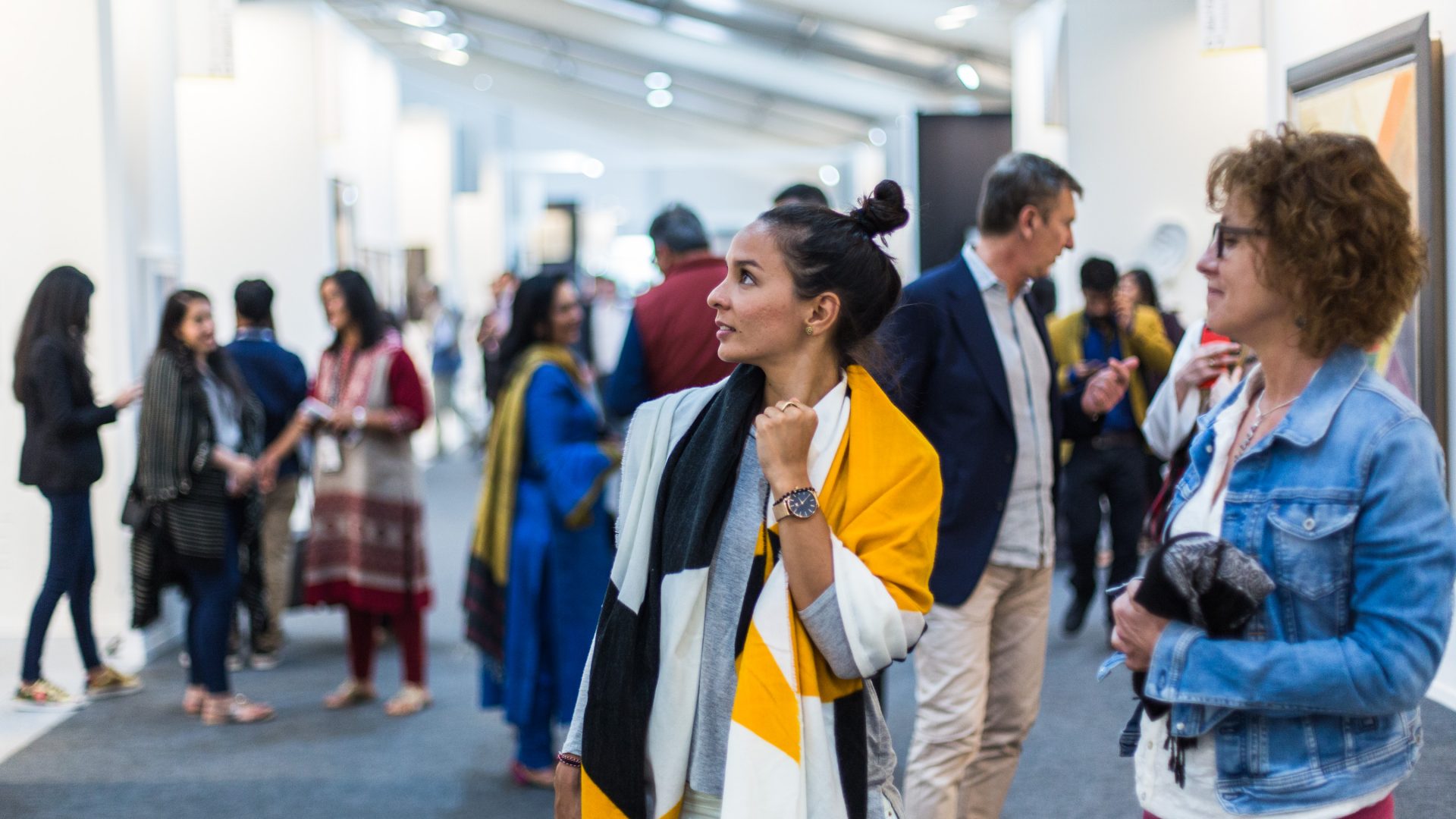JAGDIP JAGPAL

IN CONVERSATION WITH JAGDIP JAGPAL
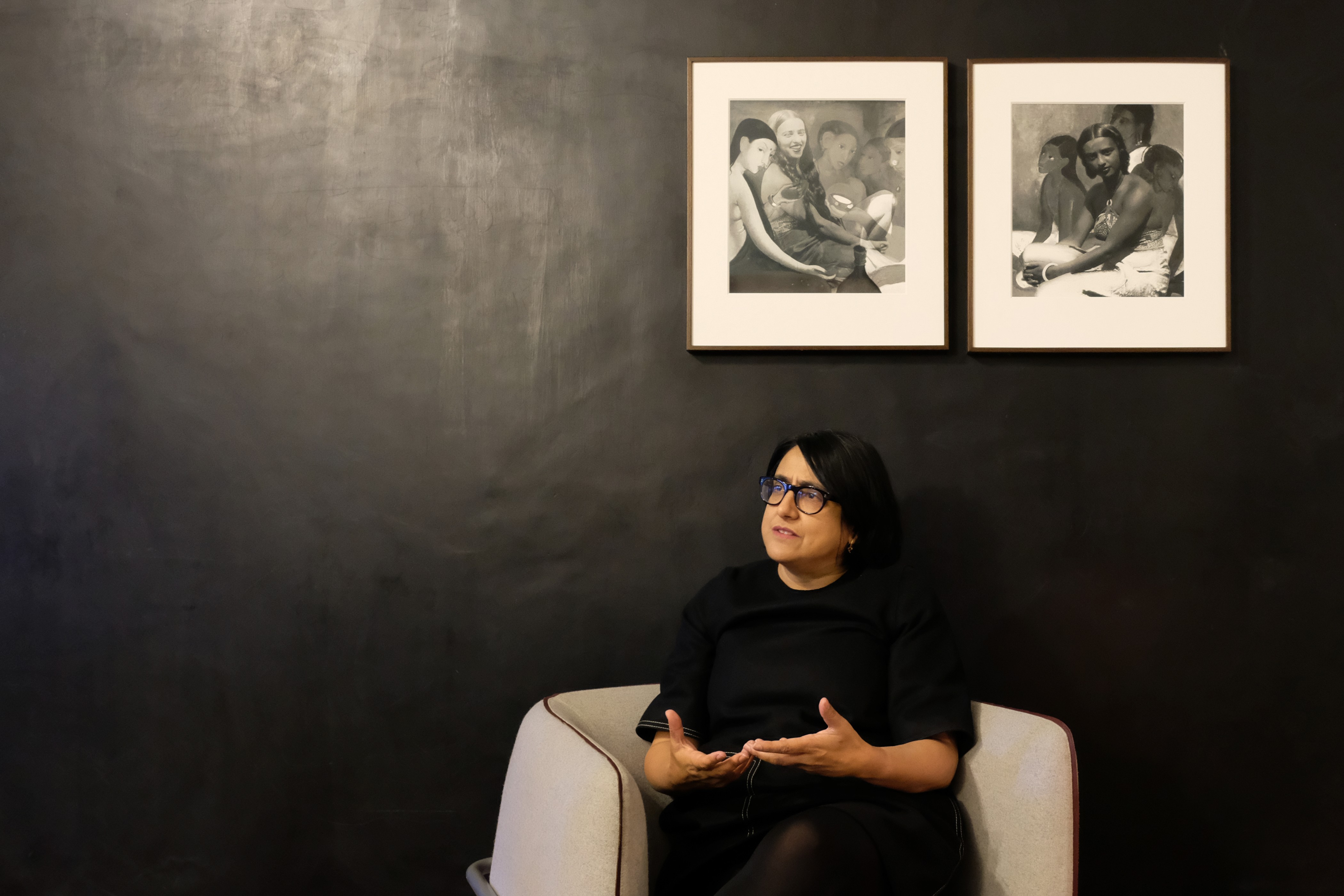
DIRECTOR, INDIA ART FAIR / MUSEUM TICKET HOARDER / TEA LOVER
Jagdip Jagpal on the identity of India Art Fair 2020, the role of art as a political tool and the need for art in public spaces.
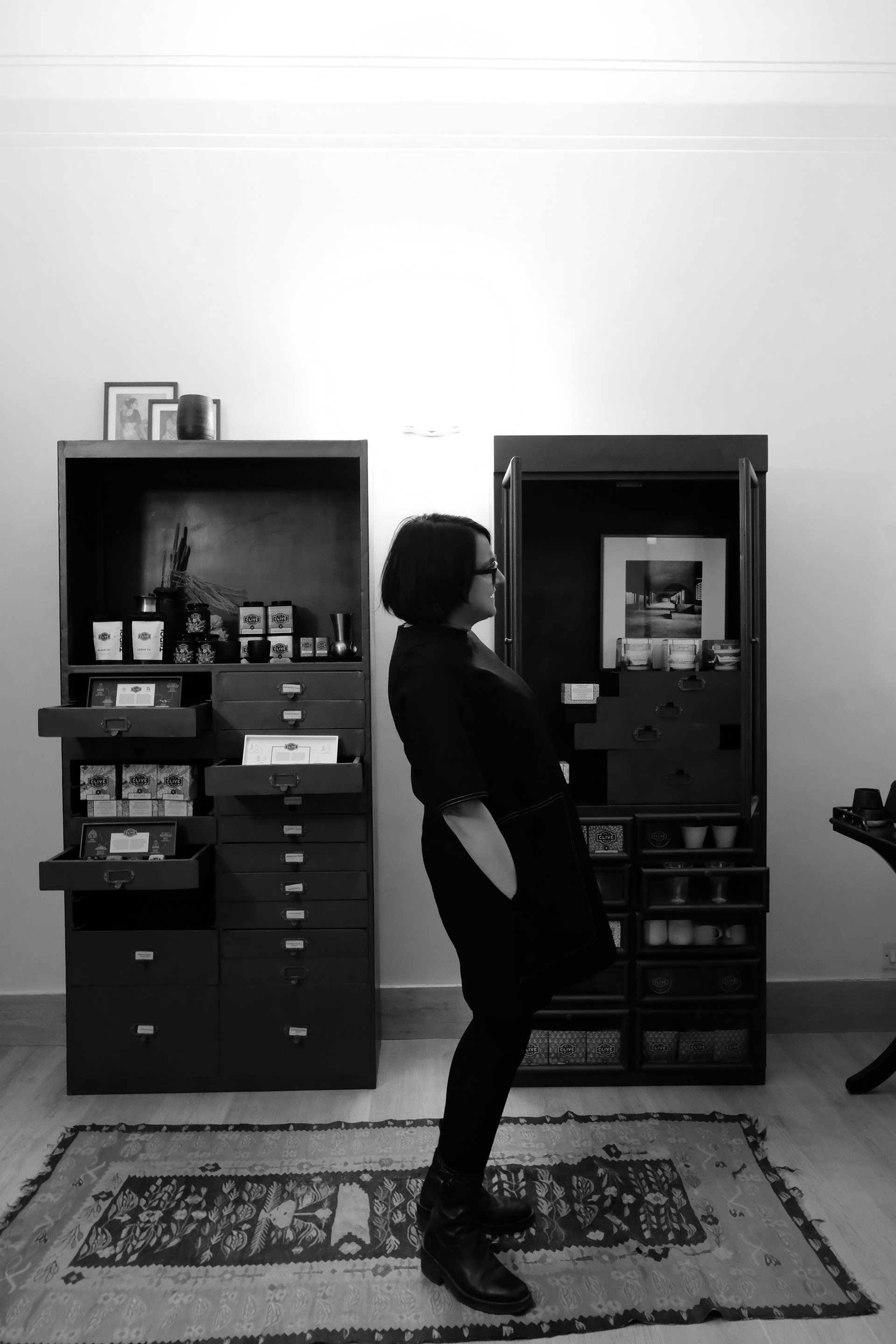
With the India Art Fair around the corner (January 30 – February 2), we’d love for you to share your vision for 2020. Is there an exciting project or an upcoming artist to watch out for?
My focus has been to create an identity for the fair. Earlier, one didn’t know whether it was a fair to see Indian art, South Asian art, or international art. The space was very much just a space for sale. If you paid for a booth, you could put whatever you wanted in it. So for somebody like me, sitting in Europe, I was concerned that there wasn’t enough South Asian art getting an audience. Part of that problem was the fact that India wasn’t promoting the art, and the efforts were not reaching the broader international audiences.
So never mind the theme, the question is: what is the commitment this year? What is the identity of the art fair and what is its purpose? The purpose is to sell high-quality art and support the local gallery system. We’re committed to a 70-30 split, 70% of the floor space will always be committed to Indian galleries selling South Asian art, also we include South Asian galleries within that. There aren’t galleries from Pakistan who come over. We struggle with that, but that doesn’t mean we can’t get Pakistani art. For the 30%, we don’t want lots of big blue chip galleries. I’m not interested in smash and grab. We look for a better variety. Even around Asia, for example, areas like South Korea where Indian artists have major exhibitions so that we’re not just looking towards the West. Then we also look at a combination of galleries such as David Zwirner (London, New York, Hong Kong, Paris) and neugerriemschneider (Berlin), our decision is based on what artists do we want to see on our platform. It’s not about the cost of the artist. It’s really important to pick artists we think people will be interested in.
In terms of what is new this year, I’m most excited about Artists in Residence conducting workshops. Gagan Singh will be conducting a drawing class in our learning space in the bookshop. Manisha Parekh will be leading a paper making class to address waste. In another workshop, superstar artist Marcel Dzama will be screening the making of his Dadaist film Une Danse des Bouffons or The Jester’s Dance.
“My focus has been to create an identity for the fair.”
“So never mind the theme, the question is: what is the commitment this year? We’re committed to a 70-30 split, 70% of the floor space will always be committed to Indian galleries selling South Asian art.”
“I’m most excited about Artists in Residence conducting workshops. Manisha Parekh will be leading a paper making class to address waste. Superstar artist Marcel Dzama will be screening the making of his Dadaist film Une Danse des Bouffons or The Jester’s Dance”
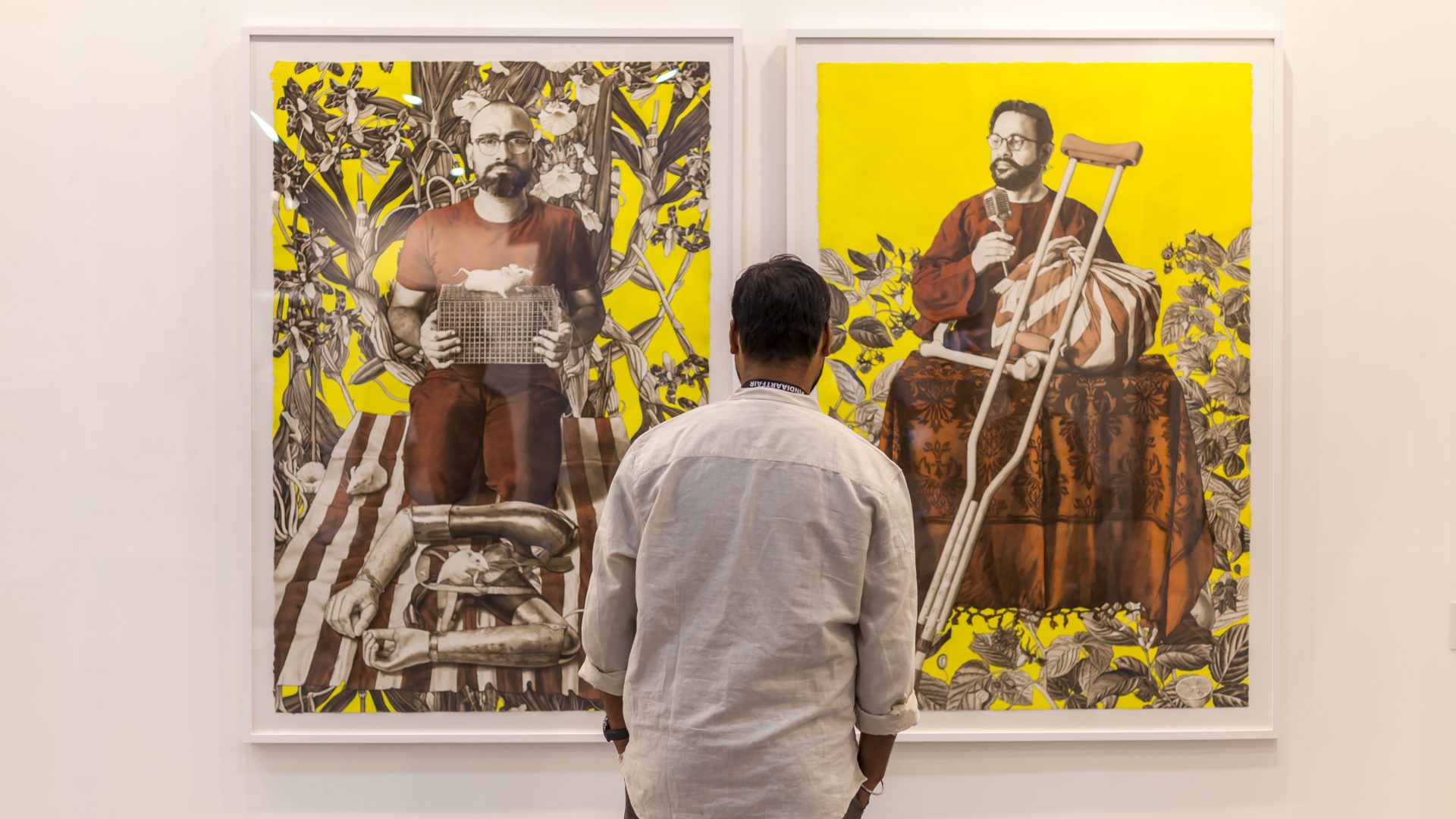
In a country like India, how do you think art can be disseminated to reach wide, diverse audiences? Would you consider the India Art Fair playing a role in reaching out to a larger audience?
Social media is now the real key to communication and learning because you may never visit the fair or never get to travel internationally and see exhibitions – social media is the quickest route.
I used to be obsessed with magazines when I was young, the images and the stories. Magazines were our social media. That’s what was available then. Social media and websites do that now.
The communication side is something we are very proud of – we have built a highly-engaged audience across our digital platforms in less than two years. I set the editorial strategy, style, and tone – it’s got to be accessible and in tune with things that are happening in the art world.
There’s no point in doing something if you’re not communicating to a wider audience or if your communication is biased and you only tell stories or promote artists who have a financial link. So our social media, website, as well as our print magazine, features original, new stories and interesting art we come across and we make sure the artist’s voice is always heard.
Here at No. 3 Clive Road, we focus on contemporary Indian design to celebrate a cultural heritage as old as a cup of tea. What is it, in your opinion, that makes art and design universally relatable?
To me, design is functional art. But both art and design can also communicate something. For example, if you think of artists Thukral & Tagra, they are creators of art, interactive games and projects, but they’re also designers. Creativity is the core of both. For the art fair, I have to be a purist – it’s an art fair first. A journalist once said to me, you say it’s about art but you’ve got the Delhi Crafts Council exhibiting here, implying that craft can’t be art. But anybody who walked up to their booth would see art pieces.
“The communication side is something we are very proud of – we have built a highly-engaged audience across our digital platforms in less than two years. I set the editorial strategy, style, and tone – it’s got to be accessible and in tune with things that are happening in the art world.”
“To me, design is functional art. But both art and design can also communicate something. For the art fair, I have to be a purist – it’s an art fair first.”
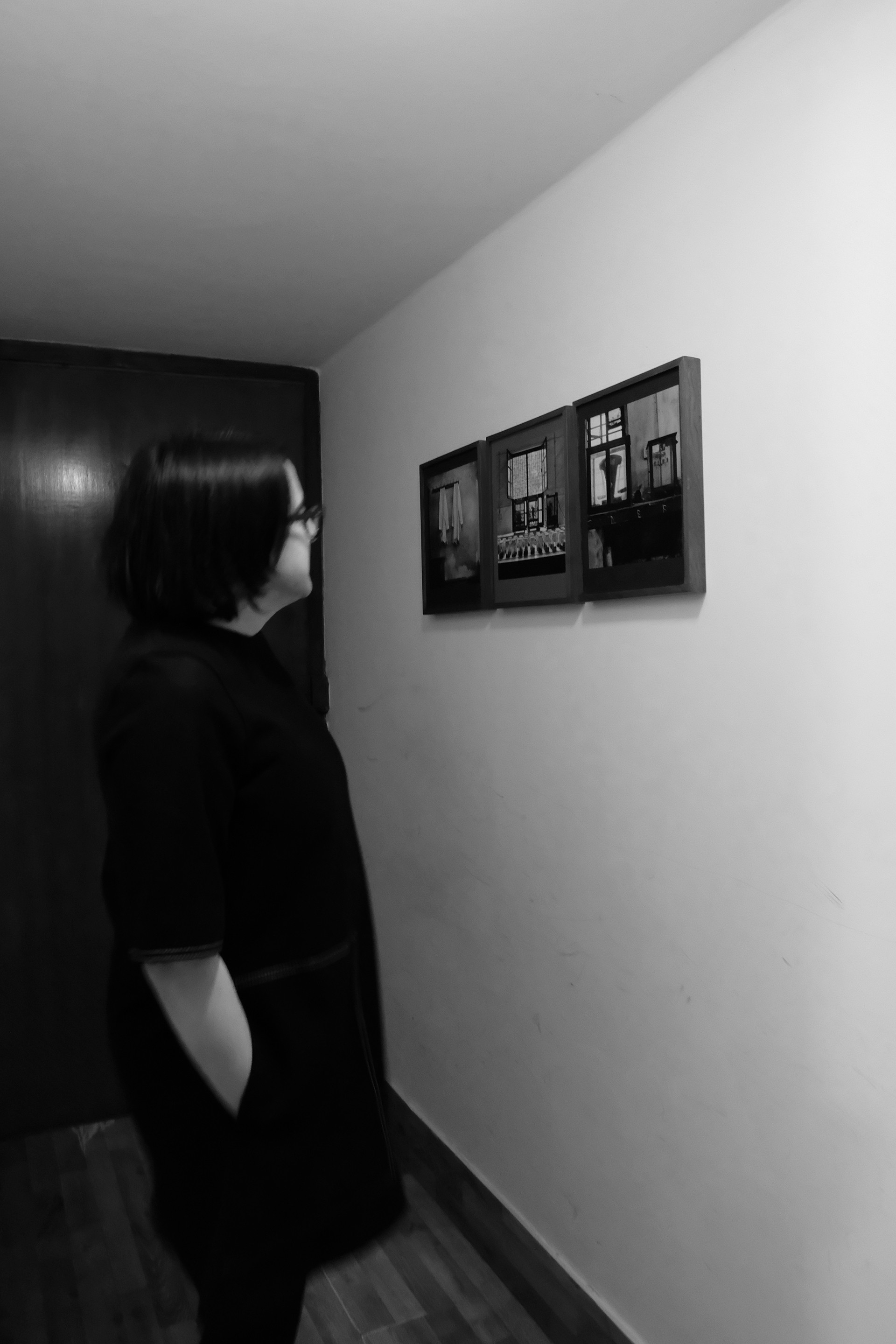
What role do you see art playing as a political tool?
I’m actually quite clear on that because a lot of art is inspired by what’s happening around us. Art has been a key communicator of what happens of the times – political, social, cultural and ecological – all those elements.
Our facade artist, Sameer Kulavoor, has created a work with an image of ordinary people going about their ordinary lives – titled This is Not a Still Life and in that very simple image, he’s speaking to everybody in so many different ways.
You have to have a reactive strategy and those who do are the best artists. What’s happening at the moment has been a trigger for depression for very many people, but there’s also a chance to send a message of solidarity and support. Art challenges people. What’s the difference between someone writing a story or going live on television or radio and talking about what’s happening. Art is doing the same thing and that’s a real talent – to be able to capture so much in a simple yet impactful way.
How do you see art impacting public space? Do you think our urban systems should make more place for public art? What role can this play in engaging local communities?
My concern that comes with public art projects is that they should have relevance. So, if someone just stuck a Jeff Koons outside my window, I’d go – what the devil is that for? And why should I care? And if I see somebody damaging it, what would make me stop them? What would make me say, “that means something to us, so treat it with respect.” Public art projects have got to be relevant. They should not come from this idea that communities that don’t understand contemporary art and aren’t cool enough to critique and engage with contemporary art.
My biggest worry about art in public spaces is that even though the streets belong to everybody, and public art is great, it’s the private corporations and individuals who end up funding these projects. They don’t necessarily involve the community or a diverse group of representatives in their selection process. What then, is the point of public art?
“Art has been a key communicator of what happens of the times – political, social, cultural and ecological – all those elements.”
“What’s happening at the moment has been a trigger for depression for very many people, but there’s also a chance to send a message of solidarity and support.”
“Public art projects have got to be relevant. They should not come from this idea that communities that don’t understand contemporary art and aren’t cool enough to critique and engage with contemporary art.”
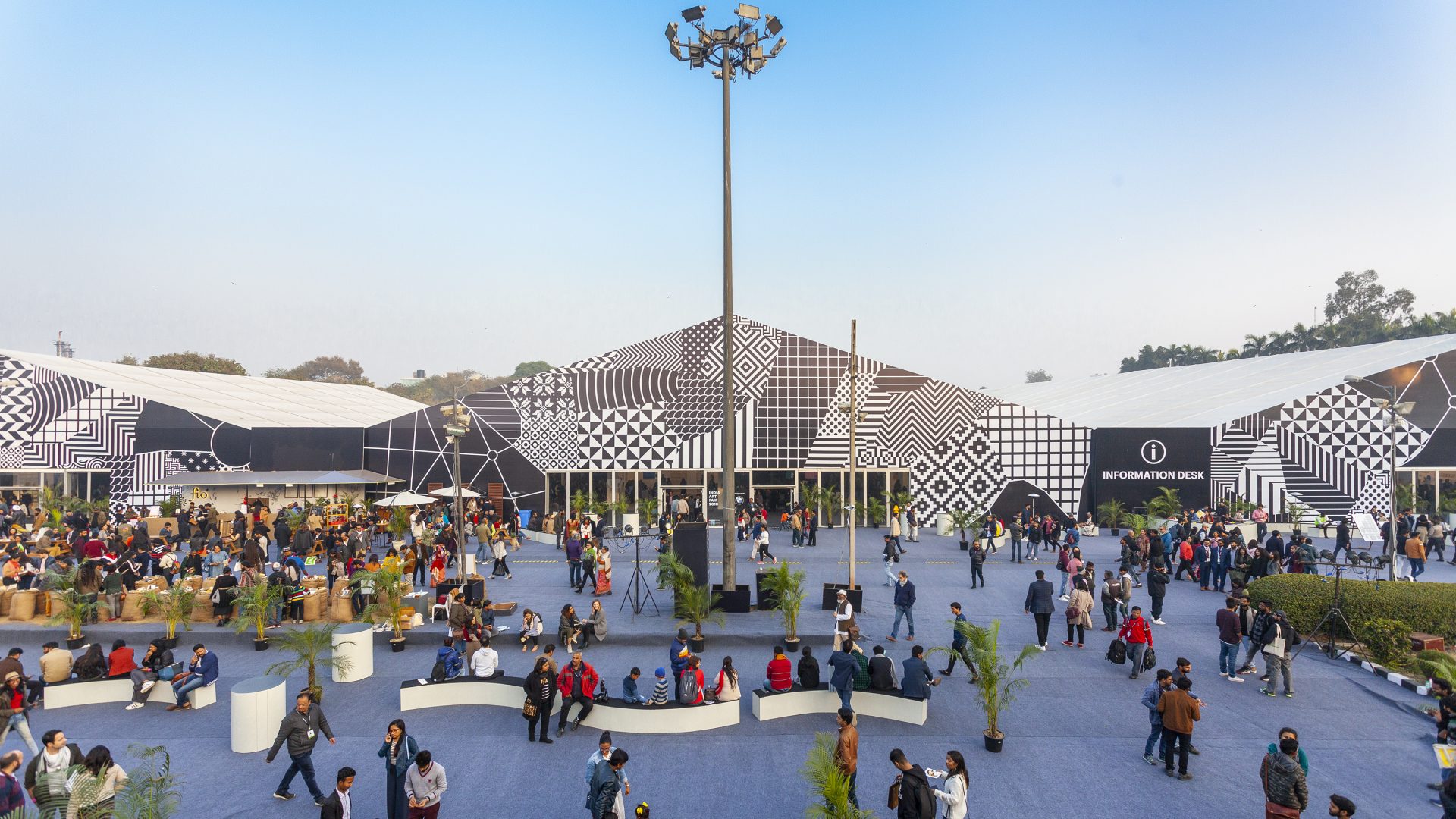
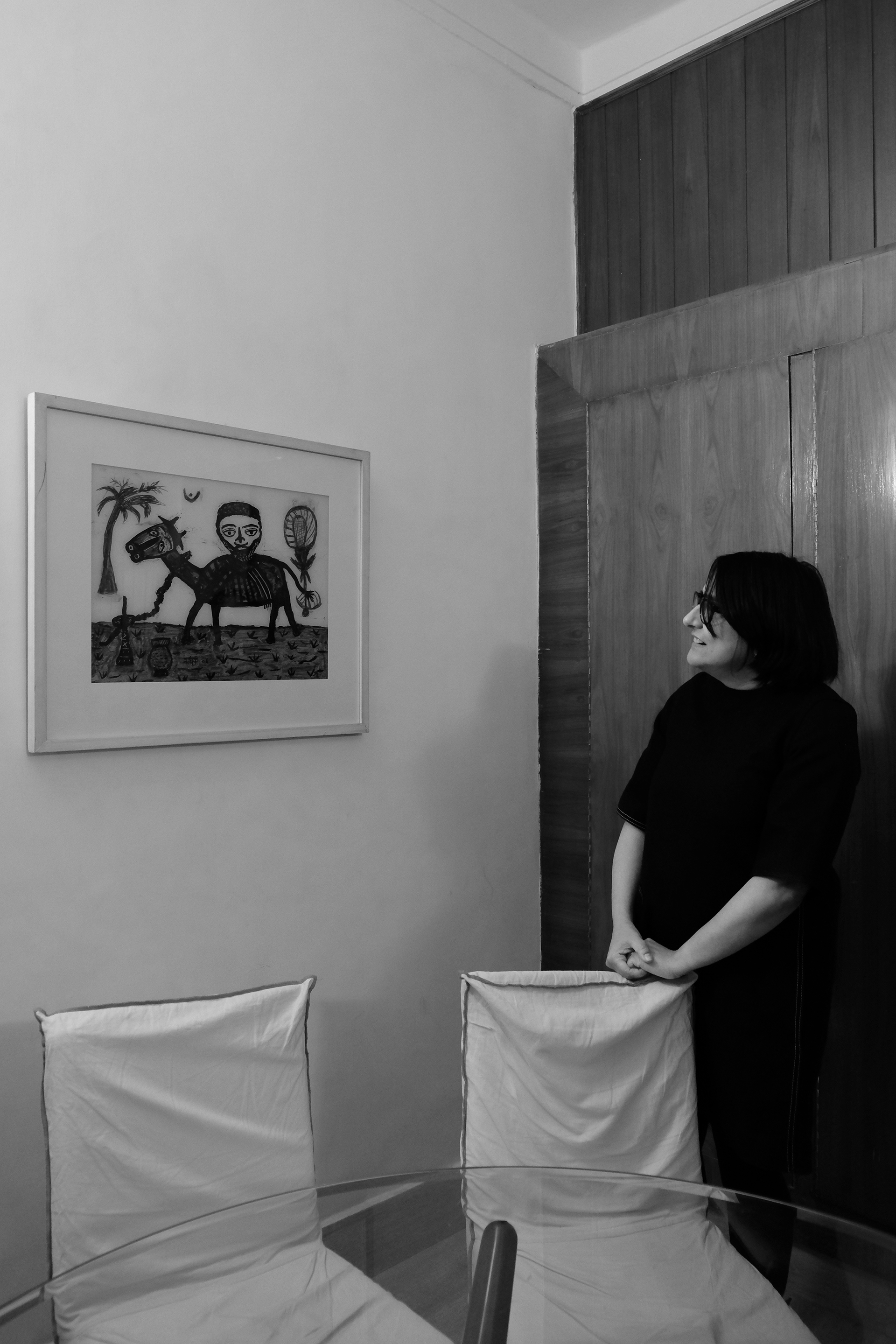
To what extent do you think India’s many traditional art practices should be preserved? Should they find a place, in method or reference, in contemporary art? What are some examples of art that manages to achieve this?
If you think of contemporary art practices, they haven’t just been dropped from heaven. They’re all passed down. Even the materials people are using – not everything is newly created polymer. Traditional art practices are being preserved in contemporary needs.
Unfortunately in India, because a lot of the traditional art practices and training was within families or groups, there’s sometimes a cut in the generation, which means that there aren’t as many people practicing certain types of art forms anymore. For example, pichwai, do we know who actually makes these? Let’s name the artists!
What would you change in India’s pedagogical practices to bring about a more critical awareness of, engagement with, and responsibility towards art?
The most important thing for universities all around the world is to bring experts and researchers who also have the ability to teach. To be an expert at something doesn’t necessarily mean that you can teach others. At the same time we also need to challenge these experts and say, ” it’s great that you’re an expert, but you may not be reading what the audience is thinking.” There is also this sense of exclusion that we deal with in the sector. Often we see people exclude others in order to keep knowledge to themselves.
“The most important thing for universities all around the world is to bring experts and researchers who also have the ability to teach. There is also this sense of exclusion that we deal with in the sector. Often we see people exclude others in order to keep knowledge to themselves.”
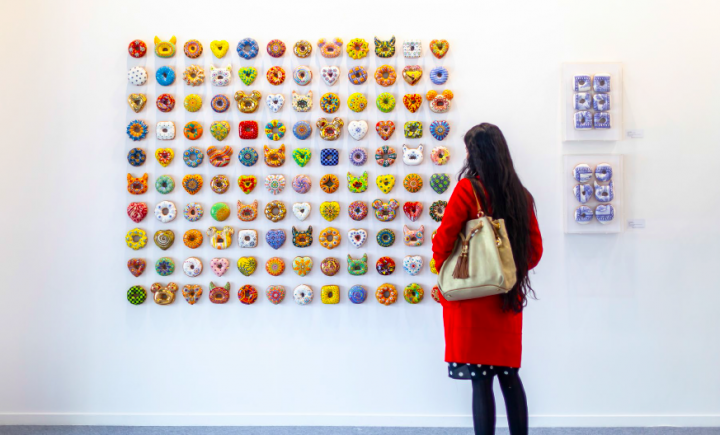
Globally, it’s a very exciting time for art, what are some of your favourite exhibitions in recent times?
The exhibitions that always stick in my mind, either delight or disgust. Obviously it gets a reaction from you, otherwise, it’s irrelevant. The most recent exhibition of Mahesh Baliga at Project 88 in Mumbai tells very simple stories. There’s one piece that I just can’t look at again, it’s too emotional. All he does is convey simplicity, yet there’s so much emotion in his work. His work is not flashy, and you make a connect.
I’ve kept every ticket of every exhibition I’ve ever been too, every leaflet. I’m the girl who actually went to see Gadaffi: The Opera, back in 2006. Everybody claims that they were there, I was actually there! I have my ticket to prove it!
I actually see a lot of theatre as well and I miss it. So, I try to find as much time to see it. I have to say, the production of Sounding Vanya at Serendipity Arts Festival 2019 was an absolutely knockout, @#$% brilliant. If someone could bring that set and production to Delhi, it would be amazing.
Tea, like art, can be a medium for generating conversation and bringing people together. How can we both, you as the Director of the India Art Fair and us as a global tea brand, continue to sustain much-needed connectivity.
At Frieze this past year, there was a performance by Yasmin Jahan Nupur, where you had tea with the Bangladeshi artist. As part of it, Yasmin tells you the whole story of colonialism through the cup of tea that you’re having. It was very moving.
“The exhibitions that always stick in my mind, either delight or disgust.”
“I’ve kept every ticket of every exhibition I’ve ever been too, every leaflet.”
“The production of Sounding Vanya at Serendipity was a knockout. It was a brilliant production. If somebody could bring that to Delhi, it would be amazing.”
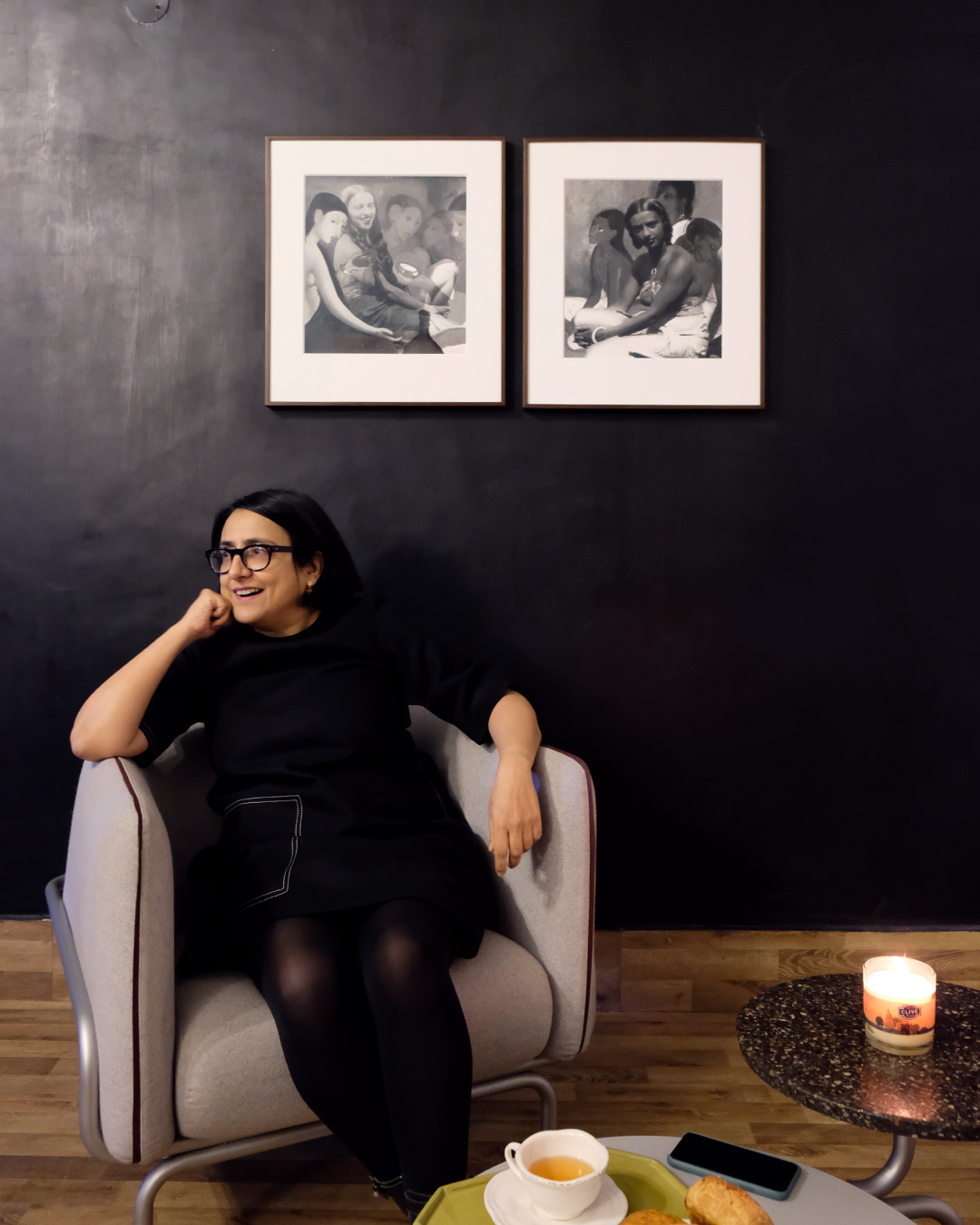
Tea may have a colonial legacy, but people don’t think of tea as a Western invention. Tea belongs to our part of the world. It connects us with China, it connects us with Africa, so there’s that colonial history, but there’s also our history. It is a product that captures the very essence of India.
More people need to sit down and communicate over a cup of tea – perhaps much like the traditional Indian adda or forum for open dates. It is also a beverage that is available to everyone, no matter what section of society you come from.
This was the perfect tea : Malabar Blend.
“Tea may have a colonial legacy, but people don’t think of tea as a Western invention. Tea belongs to our part of the world.”
“More people need to sit down and communicate over a cup of tea – perhaps much like the traditional Indian adda or forum for open date.”
